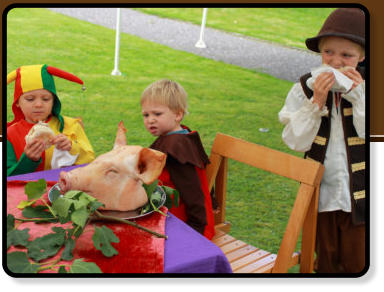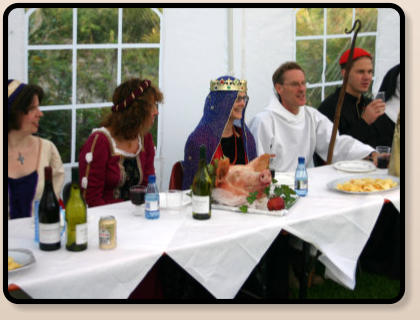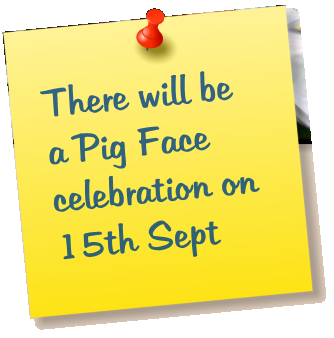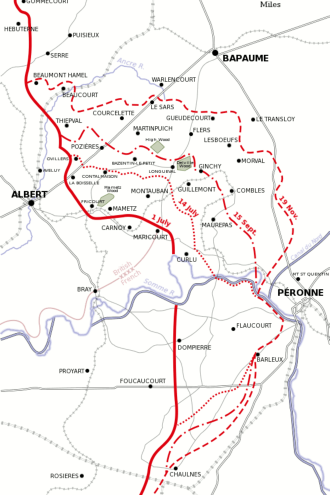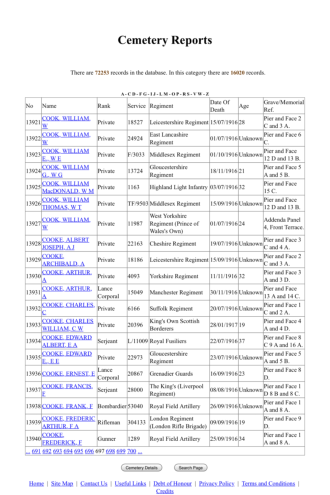

Avening’s Pig Face Day.
We are indebted to Queen Matilda, the wife of King
William the Conqueror, for this celebration. Barely
more than four foot tall, she was the smallest
Queen of England; it was rumoured that she was
involved in the commissioning of the Bayeux
tapestry, which was quite possible as it was
completed by English needlewomen, probably
nuns, to celebrate William’s success in ousting
Harold at the Battle of Hastings in 1066. She was
also responsible for the building of the Abbaye aux
Dames in Caen, which is where her crypt
and tomb can be found. And curiously she
also had connections with Avening.
King William returned to France in 1067, a
year after the Norman invasion, and he
eventually died in a riding accident in 1086.
However, Queen Matilda remained in
England, and fell in love with Brictric, the
Saxon lord of the Avening estate.
Unfortunately for Brictric, he did not return
her love, and Matilda was so devastated by his lack of
interest in her that she had him thrown in a dungeon,
where he subsequently died. However, when Queen
Matilda eventually realised how badly she had behaved,
she gave the village a church as a way of repentance,
and so it was that the Church of the Holy Cross was
built at Avening in 1080. A feast was organised in
celebration of this event, which over the years has
become formally known as the Avening Feast and
Queen Matilda’s Pageant. The feast usually takes place
on the first Sunday after 14th September, and is
currently celebrated every other year, usually after
Evensong. As the head of a pig is taken into the church
as part of the procession and adorns the top table, this
is probably why it has become known as Pig Face Day.
Apparently, in 1685 the Rector George Bull was forced
to suppress some abuses connected with this feast, but
nowadays it is conducted with complete decorum;
villagers dress up in the costumes of the day and play
out the pageant, while spectators are
treated to a sumptuous pig roast.


© Slater4 Ltd and Avening Parish Council 2020



Queen Matilda’s Pageant.
We are indebted to Queen Matilda, the wife of King
William the Conqueror, for this celebration. Barely
more than four foot tall, she was the smallest
Queen of England; it was rumoured that she was
involved in the commissioning of the Bayeux
tapestry, which was quite possible as it was
completed by English needlewomen, probably
nuns, to celebrate William’s success in ousting
Harold at the Battle of Hastings in 1066. She was
also responsible for the building of the Abbaye aux
Dames in Caen, which is where her crypt
and tomb can be found. And curiously she
also had connections with Avening.
King William returned to France in 1067, a
year after the Norman invasion, and he
eventually died in a riding accident in 1086.
However, Queen Matilda remained in
England, and fell in love with Brictric, the
Saxon lord of the Avening estate.
Unfortunately for Brictric, he did not return
her love, and Matilda was so devastated by his lack of
interest in her that she had him thrown in a dungeon,
where he subsequently died. However, when Queen
Matilda eventually realised how badly she had behaved,
she gave the village a church as a way of repentance,
and so it was that the Church of the Holy Cross was
built at Avening in 1080. A feast was organised in
celebration of this event, which over the years has
become formally known as the Avening Feast and
Queen Matilda’s Pageant. The feast usually takes place
on the first Sunday after 14th September, and is
currently celebrated every other year, usually after
Evensong. As the head of a pig is taken into the church
as part of the procession and adorns the top table, this
is probably why it has become known as Pig Face Day.
Apparently, in 1685 the Rector George Bull was forced
to suppress some abuses connected with this feast, but
nowadays it is conducted with complete decorum;
villagers dress up in the costumes of the day and play
out the pageant, while spectators are
treated to a sumptuous pig roast.
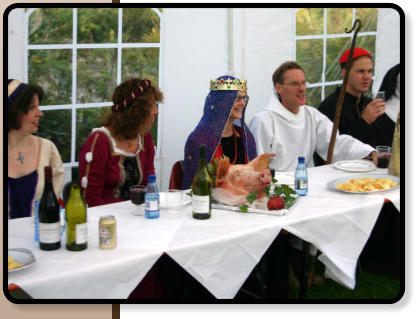



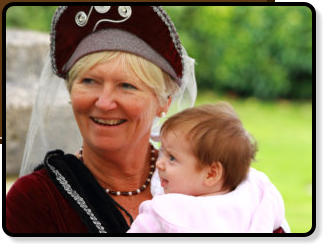
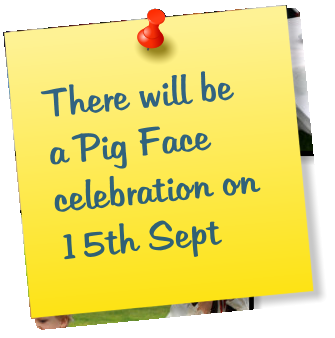





Queen Matilda’s Pageant.
We are indebted to Queen
Matilda, the wife of King
William the Conqueror, for
this celebration. Barely more
than four foot tall, she was
the smallest Queen of
England; it was rumoured
that she was involved in the
commissioning of the
Bayeux tapestry, which was
quite possible as it was
completed by English
needlewomen, probably
nuns, to celebrate William’s
success in ousting Harold at
the Battle of Hastings in
1066. She was also
responsible for the building
of the Abbaye aux Dames in
Caen, which is where her
crypt and tomb can be found.
And curiously she also had
connections with Avening.
King William returned to
France in 1067, a year after
the Norman invasion, and he
eventually died in a riding
accident in 1086. However,
Queen Matilda remained in
England, and fell in love with
Brictric, the Saxon lord of the
Avening estate.
Unfortunately for Brictric, he
did not return her love, and
Matilda was so devastated by
his lack of interest in her that
she had him thrown in a
dungeon, where he
subsequently died. However,
when Queen Matilda
eventually realised how badly
she had behaved, she gave
the village a church as a way
of repentance, and so it was
that the Church of the Holy
Cross was built at Avening in
1080. A feast was organised
in celebration of this event,
which over the years has
become formally known as
the Avening Feast and Queen
Matilda’s Pageant. The feast
usually takes place on the
first Sunday after 14th
September, and is currently
celebrated every other year,
usually after Evensong. As
the head of a pig is taken into
the church as part of the
procession and adorns the
top table, this is probably
why it has become known as
Pig Face Day.
Apparently, in 1685 the
Rector George Bull was
forced to suppress some
abuses connected with this
feast, but nowadays it is
conducted with complete
decorum; villagers dress up
in the costumes of the day
and play out the pageant,
while spectators are treated
to a sumptuous pig roast.
